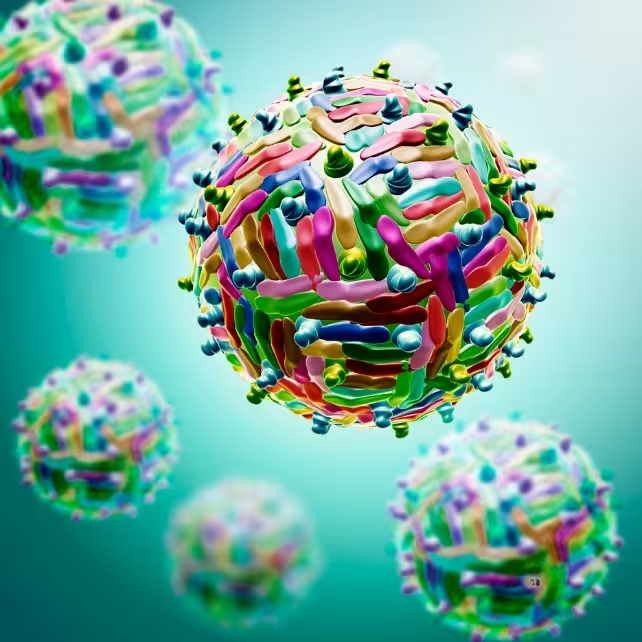5 Minutes
First-Ever Detection of West Nile Virus in UK Mosquitoes
In a significant public health development, UK scientists have recently identified traces of the West Nile virus (WNV) in local mosquito populations. This marks the first instance the mosquito-borne virus has been detected within the United Kingdom, as reported by the UK Health Security Agency (UKHSA) following routine surveillance.
Understanding West Nile Virus: Origins and Transmission
West Nile virus is a member of the Flavivirus genus, a group that also includes pathogens such as dengue, Zika, and yellow fever. First isolated in Uganda in 1937, WNV is primarily transmitted between wild birds and mosquitoes, most notably the Culex pipiens species. Birds serve as the main reservoir hosts, with the virus circulating in a cycle: mosquitoes acquire the virus by feeding on infected birds and can subsequently transmit it to other birds, humans, or mammals.
Human infections are mostly asymptomatic, with 80% of affected individuals showing no noticeable signs. For those who do develop symptoms, the illness is generally mild, manifesting as fever, fatigue, headache, and body aches, sometimes accompanied by nausea. However, in rare instances—approximately one in every 150 cases—the infection can lead to severe neurological complications, including encephalitis (brain inflammation) or meningitis (inflammation of the membranes surrounding the brain and spinal cord). Older adults, particularly individuals over 50 years old, face a heightened risk of these serious outcomes. Human-to-human transmission is extremely rare and has only been documented through blood transfusions or in utero transmission from mother to child.
How Did West Nile Virus Arrive in the United Kingdom?
The precise path WNV took to reach the UK remains uncertain. However, experts suspect that migratory birds already carrying the virus from continental Europe or Africa played a pivotal role. As these birds traveled across British wetlands, local mosquito populations likely acquired the virus during feeding. The recent findings emerged from PCR (polymerase chain reaction) analysis—a molecular technique used to detect viral genetic material—conducted by the Animal and Plant Health Agency as part of an extensive mosquito monitoring initiative in southeastern England's marshlands.
It's crucial to note that detection of viral RNA via PCR does not confirm infectiousness. After mosquitoes ingest the virus, several days are needed for replication to levels high enough to enable transmission. Additionally, this process is heavily influenced by ambient temperatures, with warmer weather accelerating viral development within mosquitoes.

Potential for West Nile Virus Spread in the UK
Historically, the UK's cooler temperatures have inhibited the establishment and propagation of mosquito-borne diseases. Scientific estimates suggest that at typical summer temperatures of around 15°C, it may require up to 100 days for WNV to mature sufficiently within a mosquito for onward transmission—exceeding the lifespan of the insect. By contrast, in regions where daily highs exceed 30°C, this maturation process can conclude in a matter of days, greatly increasing epidemic risk.
For West Nile virus to become firmly established and launch local outbreaks in the UK, several conditions must coalesce: a critical mass of both infected birds and mosquitoes and a prolonged period of warm weather enabling virus replication. Presently, these criteria have not been met. However, climate scientists warn that global warming and associated extended periods of elevated temperatures could change the risk landscape, potentially allowing WNV and other flaviviruses to establish seasonal cycles in the UK.
Global Perspective: West Nile Virus Trends and Outbreaks
Originally confined to regions including Africa and the Middle East, WNV has experienced a dramatic territorial expansion over the last few decades. Large-scale outbreaks have been documented in Greece, Romania, Israel, Russia, and the United States. Notably, the first American outbreak in 1999 in New York City saw both unexplained bird deaths and human illness, eventually traced back to West Nile virus infection thanks to investigative efforts by scientists including veterinary pathologist Dr. Tracey McNamara.
Since then, WNV has become endemic, with over 60,000 human cases, more than 28,000 hospitalizations, and upwards of 3,000 fatalities reported in North America alone. In 2024, Europe faced a surge, with 1,436 cases and 125 deaths across 19 countries, primarily affecting older adults. Outbreaks were also noted among horses and birds, species highly susceptible to severe WNV infection, underscoring the virus’s wide-ranging impact.
Public Health Implications and Prevention in the UK
The emergence of WNV genetic material in UK mosquitoes has understandably raised concerns, yet prevailing scientific consensus suggests the immediate risk to public health is minimal. As of now, there are no confirmed human infections in the UK, and current summer temperatures remain insufficient to support widespread mosquito-mediated viral transmission.
For residents and travelers, especially those heading to southern Europe where WNV transmission is higher, adhering to standard mosquito avoidance measures is recommended. These include wearing light-colored, long-sleeved clothing, utilizing EPA-approved insect repellents, and remaining vigilant in the evenings when mosquito activity peaks. Maintaining robust mosquito surveillance programs and public education campaigns will remain vital as climate variability potentially increases future vector-borne disease threats.
Conclusion
The detection of West Nile virus in British mosquitoes is a noteworthy milestone in UK vector-borne disease surveillance. While the current probability of outbreaks is low due to climate constraints, ongoing global warming could alter conditions, facilitating the spread of WNV and similar pathogens. Continuous scientific monitoring and public awareness will be essential in adapting to changing risks and protecting public health as the environment evolves.


Comments